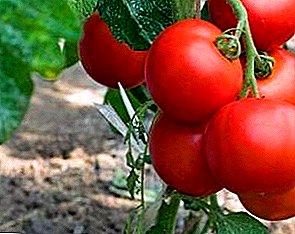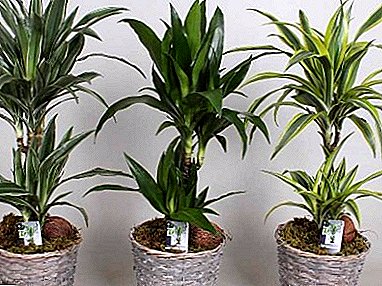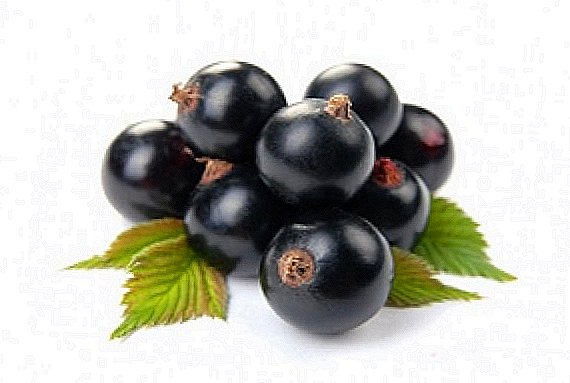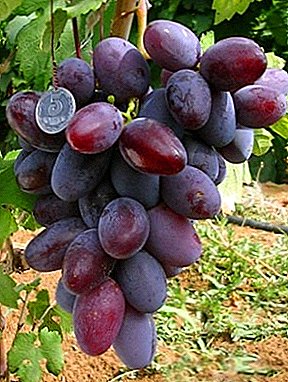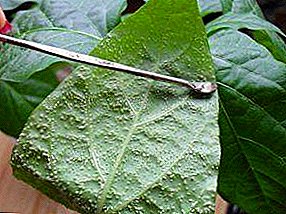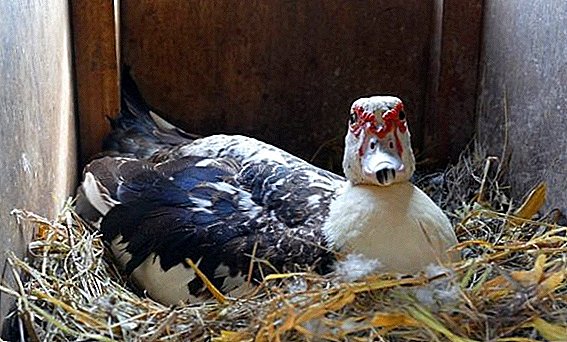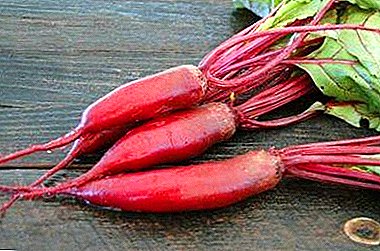
The cylinder is a late grade of red beet (ripening period more than 100 days). One of the favorite gardeners and cooks.
Easy to grow, has a sweet taste, is well stored. Unpretentious in the care and resistant to the external environment. By the amount of vitamins and nutrients, the Cylinder is the leader among its fellows.
In this article, you will learn how the cylinder beet looks like, how it was selected, how to grow it properly, and get acquainted with the detailed description of planting and caring for it.
Appearance of vegetable
The grade received the name in honor of a form: ripe vegetable reaches 16 cm in length and 9 cm in diameter. The average weight of one root from 200 to 400 grams. This form allows you to compactly place the fruit on the garden and get a good yield - up to 120,000 kg per hectare. The color varies from dark red on the flesh to dark maroon on the thin skin.
Breeding history
The cylinder was bred by Dutch breeders. Scientists have managed to maintain the original (elongated) shape of wild beets, improving taste and healthy qualities. The resulting form has retained immunity to external factors and has been enriched with vitamins and microelements.
Description of the variety and its differences from others
Fruits Cylinders are more delicate and sweet, do not have white rings. When heat treated do not lose color.
A photo
See below for photos of cylindrical beets:




Advantages and disadvantages
- It grows above the surface of the soil, which is convenient when harvesting.
- Unpretentious. Great for central Russia, Moscow region and Siberia. We have written here about other varieties suitable for growing in the middle zone of the Russian Federation, and from this article you will learn about varieties for cultivation in the Urals.
- If stored improperly, the vegetable dries quickly and becomes flabby.
- Unlike early varieties, you can not eat until autumn.
Where and for what is used?
Actively used in cooking, canning. In order to prevent cardiovascular and gastrointestinal diseases. Used as a natural dye in domestic use. Suitable for commercial cultivation of this type of vegetables..
Growing rules
- Seeds can be prepared by yourself. This will allow to control the quality of the future crop, by selecting only the best specimens for planting. And you can buy ready-made seeds. By the beginning of the season, packaged seeds are sold in all major chain stores. The cost of one bag varies from 5 to 25 rubles. In the offseason, seeds can be purchased at specialty stores. For areas with a harsh climate, it is recommended to pre-grow seedlings. In temperate climates planted directly into the ground.
- Planting is best in the second half of May, when the weather becomes more stable. Sudden frosts can lead to the death of the crop. The optimum soil temperature is 6 degrees Celsius.
- The cylinder loves heat and the sun, so you should choose a well-lit and humid place. It is important not to plant near trees, because lush crown will give shade.
- This variety grows well on sandstone, black soil and peat. But with a different type of soil, you can achieve good results. The exceptions are acidic soil types. Beetroot refers to the second crop plants, so it can be planted in places where onions, carrots or cabbage were previously grown.
- Before planting, you need to raise the bed making a width of 1 meter. Row spacing should be 25 cm, planting depth 2.5 - 3 cm. After planting, the bed is mulched. At the first entrance of sprouts, it is necessary to thin the culture in two stages: first 3 cm from each other, and with the appearance of foliage from 6 to 10 cm. Do not leave too much space, the fruit can outgrow it having lost its taste and nutritional qualities.
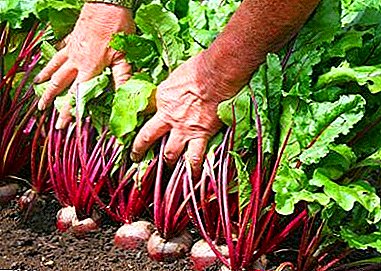 The cylinder is drought-resistant, but watering should not be neglected. It is very important to do this at the shoot stage. In case of prolonged heat, preventive irrigation is required, on the basis of one bucket of water per square meter. Two weeks before harvesting, watering is stopped.
The cylinder is drought-resistant, but watering should not be neglected. It is very important to do this at the shoot stage. In case of prolonged heat, preventive irrigation is required, on the basis of one bucket of water per square meter. Two weeks before harvesting, watering is stopped.- Fertilize the plant well with ashes. Once per season, you can pour a solution of boric acid. Experienced gardeners add a tablespoon of salt to a bucket of water, this gives the fruit sugar content. It is better not to get involved in organic matter, otherwise all growth will go to the leaves. Supplementary feeding a small amount of mullein diluted with water.
- When growing this crop, special attention should be paid to weeding. Weeds will interfere with growth and provoke diseases. After each watering it is necessary to loosen. This measure nourishes the fruit with nutrients and prevents strong weed growth.
- Harvest should be in dry weather before the onset of the first frost. At the same time, it is important not to damage the delicate skin and not to tear the root. If necessary, you can gently undermine the root with a shovel. For better storage, the tops are not completely trimmed, the tail remains intact.
Crop storage
The harvest is stored from 4 to 9 months. Harvested vegetables are dried and put in wooden boxes, sprinkled with a mixture of lime and sand or sand. If this is not possible, the fruit can be stored in open plastic bags.
The optimal storage temperature is from 0 to 2 degrees Celsius, humidity from 90 to 95%. If necessary, in a stored room, you can put a container with water.
Diseases and pests
The most common diseases of beets:
- kagatny rot;
- fomoz;
- chalcosporosis;
- corneum.
Pests:
- beet flies;
- beet weevils;
- ground beetles;
- bed bugs;
- beet fleas.
Fortunately, the cylinder is resistant to external enemies. Only gross neglect when grown can provoke a disease of this variety.
Preventive measures
 In order to avoid the appearance of rot and root beetles, it is important to avoid overflowing and sprouting from frost. Sick plants are destroyed, the soil is treated with a special solution. In subsequent years, it is better not to plant anything at this place.
In order to avoid the appearance of rot and root beetles, it is important to avoid overflowing and sprouting from frost. Sick plants are destroyed, the soil is treated with a special solution. In subsequent years, it is better not to plant anything at this place.
From pests protect regular maintenance and lack of neglect. Insects infest weeds, get rid of them, you can by spraying insecticides.
Conclusion
For the cultivation of this variety of beets do not need special skills, even inexperienced gardeners can gather a rich harvest. Fast cooking time will allow at any time to diversify the table with delicious and healthy dishes.


 The cylinder is drought-resistant, but watering should not be neglected. It is very important to do this at the shoot stage. In case of prolonged heat, preventive irrigation is required, on the basis of one bucket of water per square meter. Two weeks before harvesting, watering is stopped.
The cylinder is drought-resistant, but watering should not be neglected. It is very important to do this at the shoot stage. In case of prolonged heat, preventive irrigation is required, on the basis of one bucket of water per square meter. Two weeks before harvesting, watering is stopped.